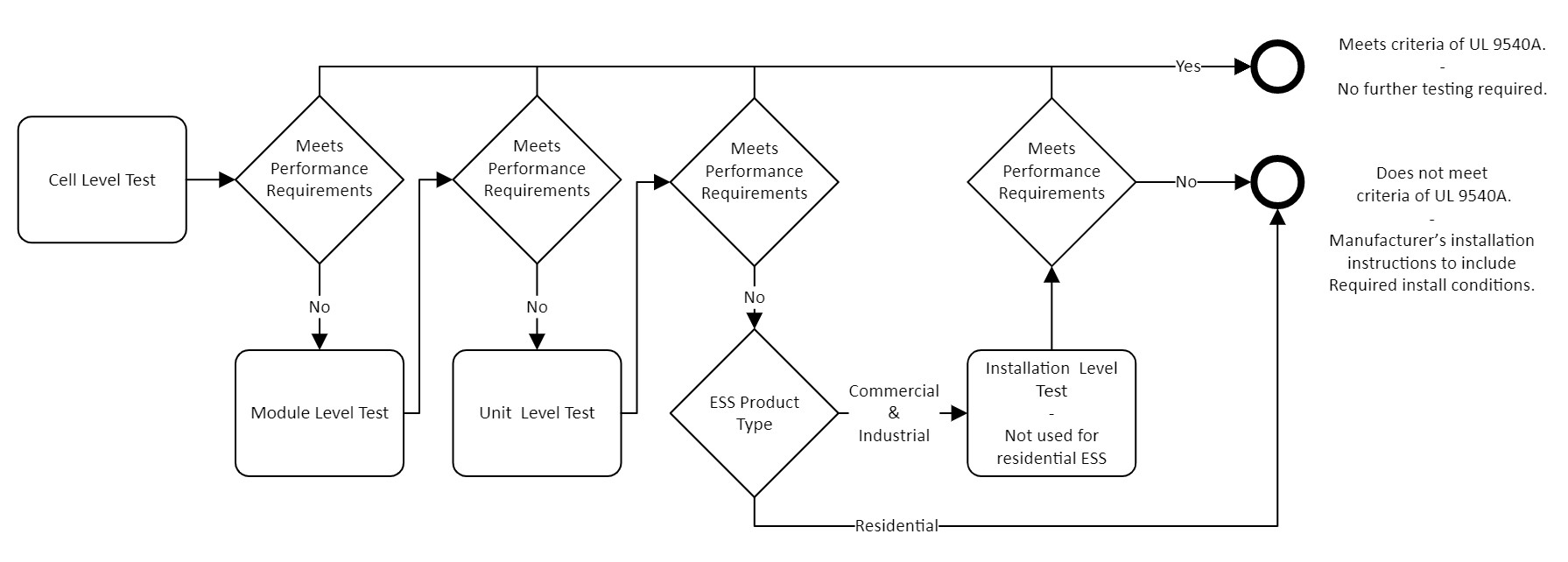UL 9540A: Test Method for Evaluating Thermal Runaway Fire Propagation in Battery Energy Storage System
UL 9540A is a testing procedure that evaluates and documents the fire performance of stationary ESS and was introduced as a compulsory requirement for all residential systems intended for installation in indoor locations as part of UL 9540 Ed. 2. The tests performed put the ESS through extreme abuse conditions that evaluate the fire and explosion hazard characteristics of the ESS. The test data is used to demonstrate ESS performance when applying for existing exceptions in the fire code to reduce location setback restrictions. Manufacturers may use cell and module-level results when comparing, and selecting, these components for use in an ESS unit.
UL 9540A Test Method: Summary
- Testing is divided into four levels: cell, module, unit, and installation (in order)
- If the ESS unit does not meet the performance criteria of the level, it is then evaluated at the next level
- If performance standards are met at a given level, it meets the criteria of UL 9540A and additional testing is not required
- Testing exposes the ESS to a thermal event to determine its ability to contain and prevent the spread of fire
- Performance evaluation of the ESS does not rely on integral safety features or the battery management system
UL 9540A: Test Levels
The following table and diagram demonstrate the performance criteria of each level and when additional testing is required.
| UL 9540A Test Level | Performance Criteria |
|---|---|
| Cell |
|
| Module |
|
| Unit |
|
| Installation (not used for residential ESS) |
|
